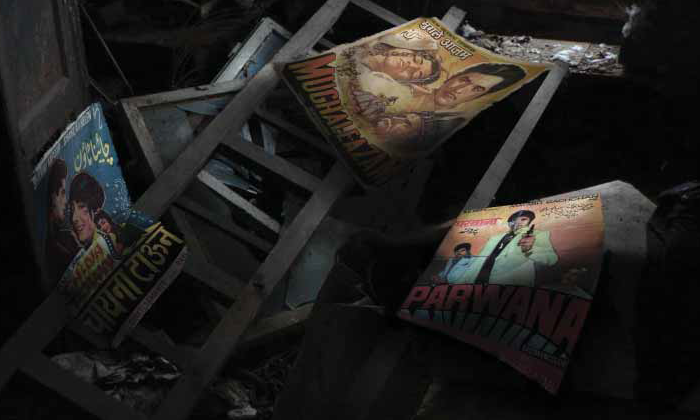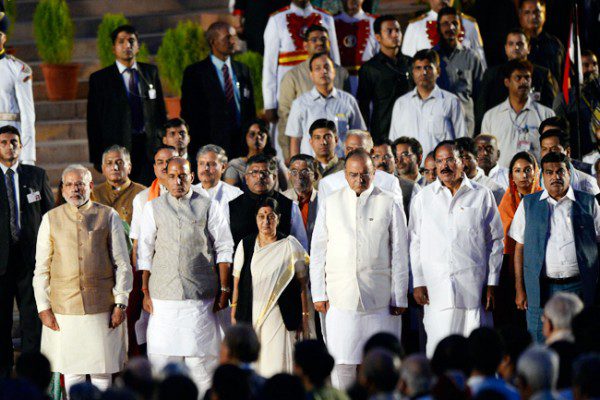“zabaan-e-hind hai urdu to maathe pe shikan kyun hai
vatan mein be-vatan kyun hai”
The tragedy is evident right from when the opening credits roll. If you cast your memory back to any Hindi film released upto the late 90s or early 00s, you will recollect that the film’s title was generally shown in three languages – English, Hindi and Urdu. It is therefore lamentable that, of the triumvirate, Urdu seems to have lost favour with the folks in Bollywood. For one cannot seem to remember the last film that advertised or depicted it’s title in Urdu. If the old adage about our films being a mirror to our society is true, then that mirror poses many uncomfortable and searching questions.
Urdu has so far had a deep and meaningful relationship with Hindi cinema. Take the Bollywood court proceedings, for example. Urdu finds pride of place within the legal representation in Hindi films. Terms like ‘chasmdeed gawah’, ‘mujrim’, ‘quaidi’, ‘tazeerat-e-hind ke tahat’, ‘ba-izzat bari’ etc are all examples of Urdu usage, synonymous with the courtroom. It has also been the language of choice for love, longing and amorous expression, leaving many a memorable Ghazal in its wake, primarily through the once common feature of our films: the courtesan or tawaif. Urdu was also associated with sophisticated poetry – a fortunate connection made possible in our cinema through the efforts of the likes of Sahir Ludhianvi, Kaifi Azmi, Gulzar, Javed Akhtar and many others. Their efforts have enriched the vocabulary of the Hindi film soundtrack, immeasurably. In the light of these facts, it is then regrettable to note the almost complete disappearance of the language from our silver screen- right from the opening credits to the fall of the final curtain. It is perhaps reflective of the new reality of Hindi cinema, which is now rooted more in authenticity than ever before. Filmmakers nowadays often use the language and expressions of the region or milieu they place their films in. So you have the Mumbaiya tapori tongue, the jocular Punjabi language, the UP/Bihari ‘bhaiyya’ usage and the increasingly popular urban Hinglish concoction. Even Muslim characters do not seem to speak fluent Urdu anymore (not that they alone should be the torchbearers). Urdu, in India today, does not really have a region of its own – with the possible exception of parts of Punjab and Uttar Pradesh, both filmi backwaters.
So the antipathy towards Urdu in cinema may be understood in context of the gradual decline of the language itself. We have done ourselves a great disservice, as a nation, by failing our languages. There are instances where one hears of Urdu being branded a foreign language, a notion which may explain the gradual apathy. This is also a notion, which is patently false. Urdu is a completely indigenous language – a happy mix of Farsi, Turkish and Sanksrit – originating sometime during the Mughal rule and then coming to be more commonly known as ‘Hindustani’ in the northern regions of the country. And this was extensively patronized by both the later Mughal rulers as well as the British colonialists who followed them. Post the 1947 bloodshed, the idea that Urdu was the language of Muslims or Islam gained currency. This bizarre notion wasn’t completely bought over even by Bollywood till as recently as 1970, where Hrishikesh Mukherjee’s terminal but cheerful Punjabi Hindu hero Anand preferred to read and sing his poetry in Urdu rather than in Hindi (Kahin door jab din dhal jaye), signifying ownership of Urdu as our very own, unfettered by religious affiliation. But continued skirmishes with Pakistan exacerbated the situation and further pushed Urdu from being ‘the language of Muslims’, to being the ‘language of Pakistan’. This in India coincided with a calibrated move towards Hindi as the national language to unite the country and the later move towards English as the middle class elixir to globalisation and uplift. Hindustani (the perfect amalgam between Hindi and Urdu) had failed to be established as a recognised formal language. While efforts to promote Urdu are still alive with dedicated news channels and pedagogy in schools, these are but tokenisms which hardly arrest the decline in the language’s fortunes. Urdu now remains ghettoised, much like the majority of the nation’s poor Muslims, living in fear and unable to truly soar. With English (and occasionally Hindi) being the major business and official language, there remains no major incentive to learn the Urdu script. This probably explains why Bollywood has dropped the Urdu title.
Our films are key repository and reflection of language, societal norm, custom and tradition. On current evidence, the fate of this wonderfully sophisticated language looks bleak, at least on celluloid. The dream merchants have all but abandoned it, a reflection of the wider malaise of the slow death of the language itself. For reference, one will need to return to the cinema of the 40s, 50s and the 60s. It is true that languages tend to change in tune with aspirational motivations of the larger population and the prevailing politics of the day. Thus, many languages remain dynamic, some atrophy and others metamorphose into something new. One hopes for regeneration in the case of Urdu – but it is clearly wishful thinking. Its days seem to be numbered.















Rizwan Ahmad
Dear Abhishek,
This is a very interesting article. I am a sociolinguist who has published some work on the sociolinguistics of Urdu. I am using this in my current research on the language of Bollywood songs.
http://www.rizahmad.com